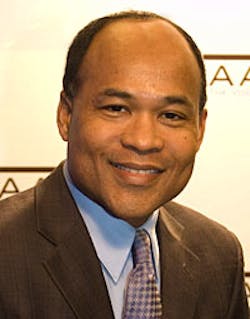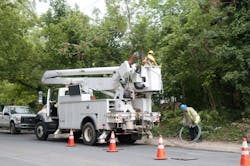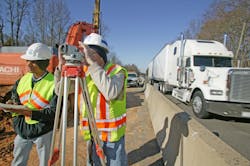Chatted with Tony Dorsey (at right) – manager of media relations for the American Association of State Highway and Transportation Officials (AASHTO) – the other day about what state agencies responsible for getting transportation systems re-opened following all sorts of natural disasters are learning from the recent pummeling Hurricane Sandy dished out along the U.S. east coast.
The interesting thing is that many of AASHTO’s members now dealing with the aftereffects of the “Frankenstorm” created when Sandy merged with two other weather systems actually deployed a variety of tactics developed from previous storm experience – particularly Hurricane Irene, which delivered a vicious hit to Vermont back in August 2011.
AASHTO put together an instructive video earlier this year to encapsulate some of the lessons learned from Vermont’s Irene experience as well.
Dorsey told me one of the key tactics State DOT agencies are now using when it comes to “disaster management” is beefing up both internal and external communication efforts – before, during, and after such storms hit.
“One of the things we’ve learned from previous disasters like Irene is how important it is not just to communicate with the public more frequently before a storm hits, but also how to cooperate better with agencies and companies that will also be involved in restoration efforts,” he explained.
That means trying to craft better coordination between state DOT teams and utility companies, highway tolling authorities, police and fire departments – any group that will be deployed as part of statewide emergency response efforts.
“And ‘communication’ also involves the use of social media and other new ‘information conduits’ that everyone uses, so we can be on the same page with both citizens and other groups charged with disaster response,” Dorsey said.
[As an example, check out the video Virginia’s Department of Transportation (VDOT) made to highlight its new 511 service for disseminating traffic information.]
Dorsey also noted that use of an “incident command” structure is vital not only to speed up and precisely target disaster response efforts, but also help maximize disaster response “efficiencies” between government and private entities.
“That command structure also helps as state DOT agencies are now more frequently working across jurisdictions to support each other’s recovery efforts from such large-scale storms,” he pointed out. “The more we learn from these disasters just reinforces the need for DOT offices to cooperate more closely.”It also reinforces the need for DOT agencies to not just develop disaster response plans but practice them frequently as well. “That means conducting everything from table-top exercises to full-scale drills,” Dorsey said, for when a disaster on the scale of a “Frankenstorm” strikes, there’s simply no time to ask questions or work out any “bugs” in the plan.
Finally, as disaster “recovery” shifts to “rebuilding” efforts, state DOT offices are now more than ever recalculating what’s need for bridges and roads to better withstand the violent forces of nature.
“We can’t just rebuild a highway bridge the same way as before, because that design didn’t survive the storm,” Dorsey explained. “We need to make sure our roadway infrastructure is ready to handle other storms/events of similar magnitude.”
[Along slightly different lines, and just for fun, check out this humorous video VDOT put together to explain how potholes contribute to roadway damage.]
Finally, Dorsey drew my attention back to what AASHTO believes is a major issue that will impact disaster response efforts: the inability to gain public support for more transportation infrastructure funding.
While it’s a controversial topic in many corners, Dorsey told me that – in AASHTO’s view – this issue connects back to the need for better, more frequent, and broader methods of communication with the general public on the part of state DOT officials.“Despite years spent explaining their funding challenges, transportation agencies have had a difficult time gaining broad public support for increased transportation investment,” noted Mara Campbell, customer services director of the Missouri Department of Transportation.
Campbell added that a new report by AASHTO – dubbed Communicating Transportation Funding Issues – offers transportation agencies what’s being called “practical approaches” to more effectively make the case for transportation investments to the general public and key decision makers.
“Better appreciation for the connection between effective communications and public awareness and acceptance of transportation investment," Campbell pointed out. "The transportation funding gap is growing and we believe that, if the public knows what's at stake, they'll support greater transportation investment."
However, is this funding issue the other side of the coin (as it were) where disaster planning is concerned? That remains open to debate I think. Still, it’s worth keeping in mind as the Mid-Atlantic and Northeastern U.S. continue to dig out from the devastation wreaked by the “Frankenstorm.”



